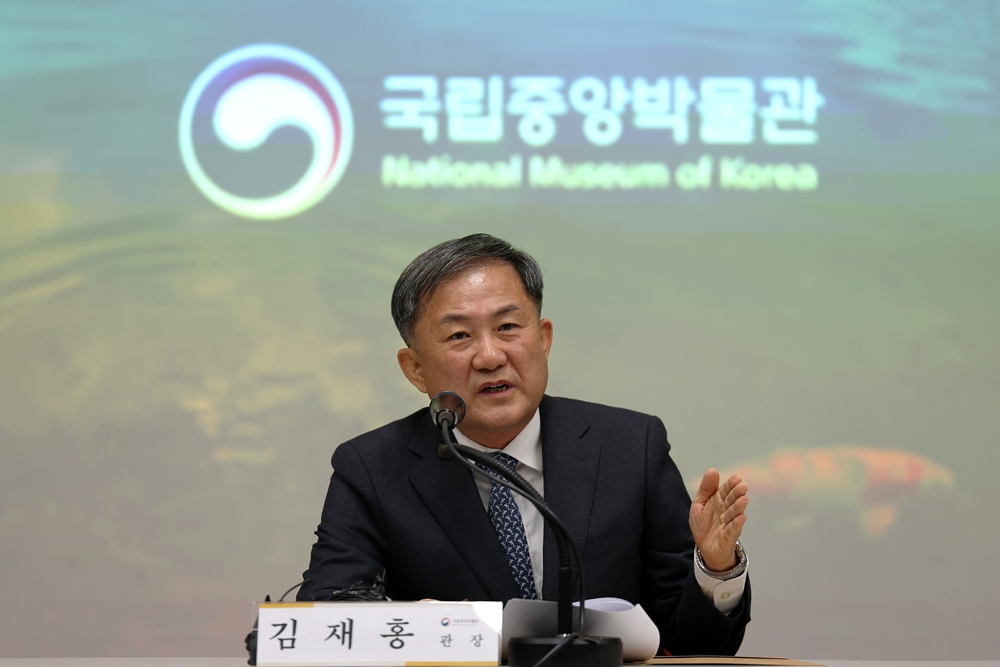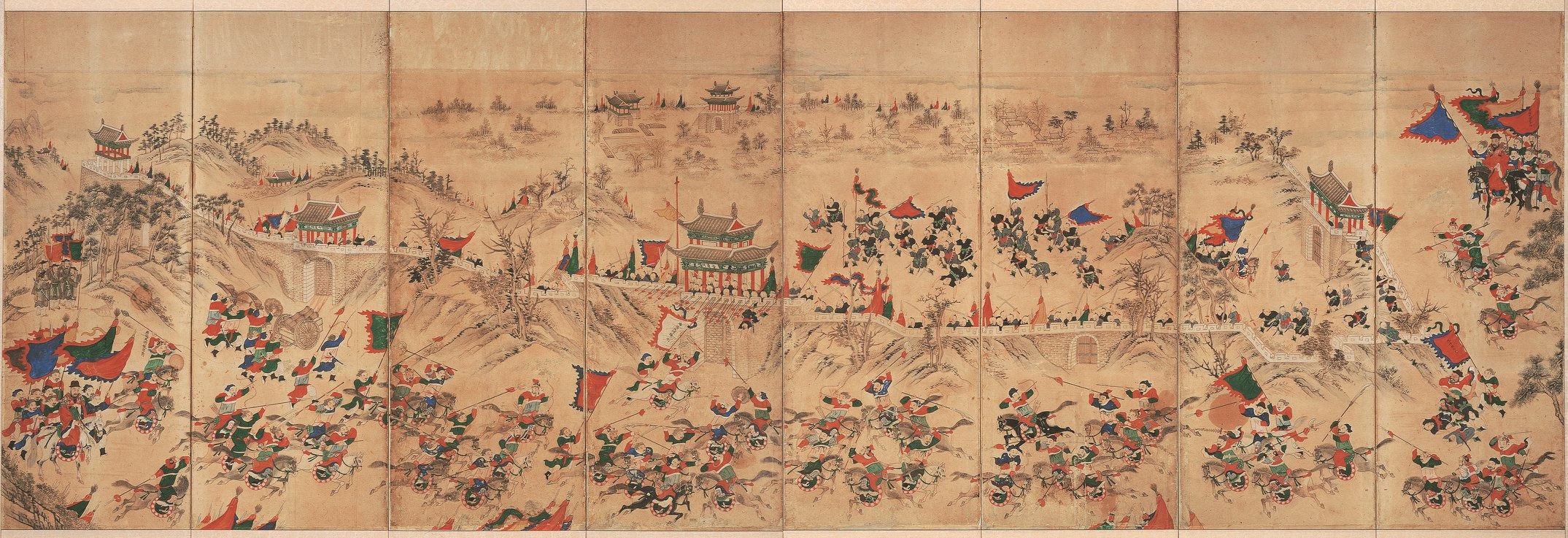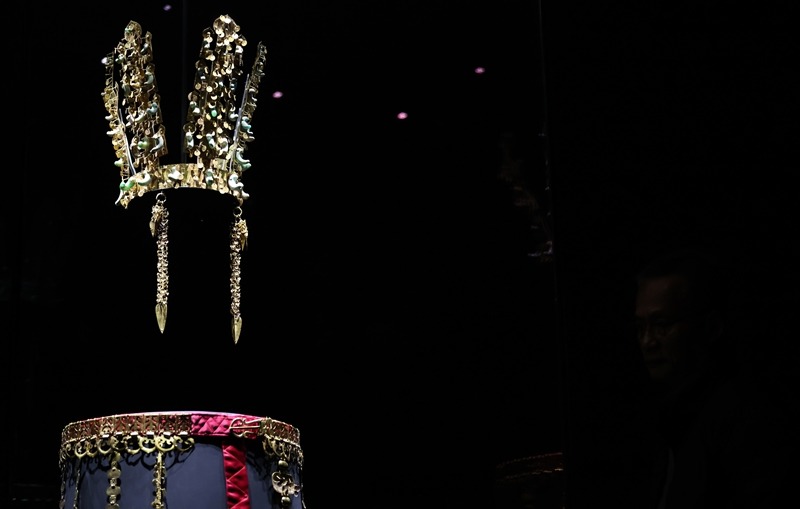Information Center
- Main page
- Information Center
- Government News
Government News
- Source
- KOREA.net
- Date
- 2025.01.22

National Museum of Korea Director Kim Jae-Hong on Jan. 20 announces his institution's main tasks for 2025 at a New Year's news conference held at the museum in Seoul's Yongsan-gu District. (Lee Jun Young)
By Charles Audouin
The country's flagship museum this year will spotlight domestic culture such as artifacts related to naval legend Admiral Yi Sun-sin (1545-98), moon jars, Japanese fine art and Islamic art.
The National Museum of Korea (NMK) on Jan. 20 said this in announcing its main plans for this year.
"This year marks the 80th anniversary of national liberation and our museum and the 20th anniversary of our relocation to Yongsan-gu District," NMK Director Kim Jae-Hong said. "We want to build a museum that leads generations through communication and empathy."

This work depicting the Pyeongyangseong Fortress in the late 16th century will be shown at an exhibition of art related to naval legend Admiral Yi Sun-sin. (National Museum of Korea)
The museum's main exhibition this year is about Admiral Yi. From November this year to March next year, the event will display about 100 works including "Chungmugong Jeonseo" (The Collected Writings by the Loyal Warrior) a collection of writings about his accomplishments and quotes; a mural depicting the battle for Pyeongyangseong Fortress in the late 16th century; and a medium mortar from the Joseon Dynasty.
Another event from July to December will honor marathoner Son Kee Chung, who won the gold medal in the 1936 Berlin Summer Olympics by setting a world record during the Japanese colonial period.
To mark the 20th anniversary of the museum's relocation to Yongsan-gu, an exhibition to open in June will highlight the flow and importance of art during the early Joseon era.
In April, an exhibition on the lives and culture of people living on Pacific islands will feature artifacts from Quai Branly Museum of France. In November, the NMK will open an "Islamic room" at its permanent exhibition hall.
Exchange exhibitions with Japan will commemorate the 60th anniversary of the normalization of bilateral ties. One on Japanese art will be held at the NMK, while another on Korean art is slated at the Tokyo National Museum.

"White Porcelain Moon Jar" is on display at the National Museum of Korea. (Lee Jun Young)
The NMK will also take a leading role in promoting domestic culture abroad.
The Denver Art Museum of the U.S. from March to June will host an exhibition of Korea's white porcelain moon jars. From March to August, Dresden State Art Collections (Staatliche Kunstsammlungen Dresden) of Germany will display artifacts from the Three Kingdoms (1 B.C.E.-7 C.E.) to the Joseon (1392-1910) eras.
An exhibition of art donated by the late Samsung Group Chairman Lee Kun-hee to run through 2027 will start at the Smithsonian's National Museum of Asian Art in Washington, Art Institute of Chicago and British Museum in that order.

A gold crown from the Silla Kingdom (57 B.C.E - 935 C.E.) is shown at Gyeongju National Museum in Gyeongju, Gyeongsangbuk-do Province. (Lee Jun Young)
Thirteen other national museums in Korea will host exhibitions. Gyeongju National Museum in Gyeongju, Gyeongsangbuk-do Province, from October to November will showcase gold crowns from the ancient Silla Kingdom (57 B.C.E-935 C.E.) to coincide with the city's hosting of the Asia-Pacific Economic Cooperation Summit in late October.
Also this year, the museum will open a conservation science center, expand its academy, and push ahead with research projects on domestic culinary culture, woodworking and epigraphy.
NMK Director Kim said, "By doing our best to connect the past, present and future, we will become a museum that links and breathes with various cultures."
caudouin@korea.kr